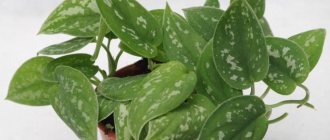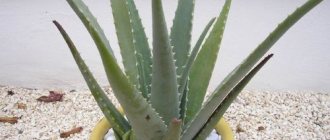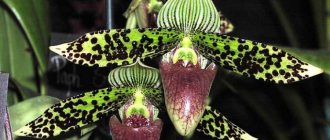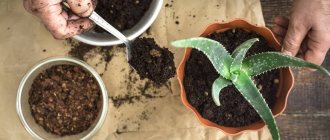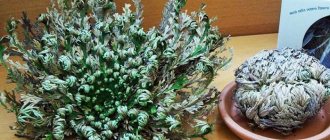What to do if the plant breaks off?
Often people have to deal with the fact that the stem of a flower breaks. Sometimes this happens when moving or as a result of careless tilting of the plant. The top of the aloe comes off, leaving its roots in the bowl. In this case, the relevant question will be how to properly plant aloe in a pot. You need to take the broken part of the plant and place it in a cool place. Wait a few hours.
Prepare suitable soil and a container for the agave. Take a flower and plant it in moist soil. In this case, the stem should be deepened by about 2 cm. It is recommended to water as soon as the soil becomes dry.
It must be remembered that aloe should not be watered frequently. This plant easily survives drought. In summer, the flower actively develops. It is recommended to water it once a week. In winter, aloe sleeps, so it is worth moistening the soil 2 times every 30 days.
As aloe grows, it needs regular feeding. It is recommended to fertilize the plant in summer and autumn. Do this about once a month. As fertilizers, you can use compounds intended for cacti and succulents. Liquid mixtures based on minerals are also often used for feeding.
It is recommended to install the plant in well-lit places. However, remember that aloe does not like direct sunlight. There should be no dry air in the room. In order for the plant to actively develop, it is recommended to regularly spray its leaves. The room in which the flower is located should be ventilated from time to time. However, it should be borne in mind that aloe does not like drafts.
Winter time is the period of plant hibernation. In cold weather, you should not disturb it with fertilizing, transplanting and frequent watering. If you follow these rules, you can provide your flower with complete and high-quality care.
Aloe is a member of the lily family, a group of succulents. Its main distinguishing feature is its long, fleshy leaves covered with soft spines. Aloe is grown by indoor flower lovers not only as an ornamental plant, but also as a medicinal plant.
How to grow aloe from a shoot without roots
Aloe is a unique plant that is found in almost every home. Since ancient times, this plant has been used in folk medicine. It has proven itself as an excellent bactericidal and antiviral agent.
One of the amazing properties of aloe is that it penetrates the skin faster than water, which allows you to achieve the desired effect in a short time. Due to its rapid absorption, it is used to treat poisoning and intestinal infections. In addition, aloe has anti-allergenic and anti-stress properties.
Method of transplanting an unrooted flower
Growing aloe is not difficult. It does not require specialized care or regular watering. A young plant up to 3 years old is replanted in the spring. During this period, the aloe root system develops greatly. If you do not replant, the roots will begin to protrude from the pot and the leaves will wither. Therefore, it is recommended to carry out this work.
In the future, it should be replanted 2-3 times a year. Next, we will tell you how to transplant a plant.
- Cut off a small shoot from the root of the flower and put it in the refrigerator for several hours. This will not damage the aloe, but will allow the desired crust to quickly form on the trimmed area. It is recommended to keep the sheet in the refrigerator for up to a day.
- Checking the aloe leaf. If the crust has formed, you can proceed to planting.
- Pay attention to the ground. Before transplanting a flower, consider the soil where it previously grew. Changing the soil can negatively affect rooting or even lead to the death of the plant.
- Choose the shape of the future pot. A pot the size of a mayonnaise bucket is suitable for a small shoot. It is better to use a container made of ceramic material. Pieces of broken brick or expanded clay should be placed at the bottom. This will prevent water from stagnating in the pot.
- After rooting the flower, you should crush the top layer of soil and water it with water. Then sprinkle 1-2 cm of dry soil on top. Finally, you need to put on a plastic bag and place it on the windowsill.
It is important to remember that aloe does not like direct sunlight, so do not keep the plant in a sunny room. The room should be ventilated regularly.
The young flower is not replanted, but the rolling technique is used. This is due to the still weak and unformed root system. Take the pot with the plant and transfer it to the required container.
Modest care needs
- Protection from direct sunlight. On especially hot days it requires spraying.
- Hibernation. Does not require watering in winter. During awakening, you should fertilize the soil.
- Prevention from diseases. When the first signs of disease or pests appear, the cause must be eliminated in a timely manner.
- Aloe needs to be trimmed regularly and yellowed and damaged leaves removed. Leaves with pests are also copied. If desired, you can shape the shape of a flower. This is done by cutting off the side shoots. The emerging shoots are removed.
Aloe is a natural pharmacy on the windowsill. Even an inexperienced gardener can grow this plant. It is enough to have a little love, show a minimum of care, and the flower will not only please the eye, but also benefit you and all your loved ones.
How to plant correctly?
The optimal time of year for planting aloe is early spring, when all the plant’s forces are concentrated on developing the root system. The frequency of transplants depends on the age of the agave:
- young plants are replanted annually;
- flowers 2-5 years old are transplanted into a new pot every 2 years;
- old aloe is replanted once every 3 years.
In order for the seedling to take root in a new place, you must follow the planting rules:
- Prepare a nutritious turf substrate.
- Spray the roots and above-ground parts of the seedling with Fitosporin.
- On the third day after transplanting, place the pot in a well-lit window.
- Do not water the plant for 7 days after transplantation, so as not to cause root rot.
- After 3-5 days, pour water into the pot tray.
- After two weeks, feed the agave with a weak solution of humus.
- Add wood ash infusion to water for irrigation.
Choosing soil and pot
The substrate for planting should be slightly acidic (pH in the range of 6.0-8.0), loose and nutritious. Optimal soil mixture recipe:
- 3 parts of turf;
- 1 part vermicompost;
- 1 part peat;
- 1 part sand.
To save time, you can buy a ready-made mixture “For succulents and cacti” in the store.
It is also important to pay attention to the choice of pot. It should be wide enough (up to 30 cm) for unhindered root development, as well as stable and made of ceramic
Important! You need to lay 3-4 cm of drainage at the bottom of the pot, and pour 2 cm of sand on top of the main soil.
Preparing the appendage: how to take the baby?
The process of taking a shoot is carried out as follows:
- The soil in the pot is thoroughly moistened to soften it and make it more pliable.
- The plant is carefully removed from the pot and the maturity of the appendages is assessed.
- If they are sufficiently developed, they are separated from the rhizome using a garden trowel.
The most important thing when cutting off the “baby” is not to damage the root system of the mother plant.
Reference! The optimal temperature for keeping a seedling before transplanting is 16-18 ºС.
How to transplant?
Algorithm for appendage transplantation:
- Wash the roots to remove soil residues.
- Treat them with a weak solution of potassium permanganate or hydrogen peroxide. This is necessary to prevent infectious diseases and root rot.
- Place the shoot on the drainage in the center of the pot - so that the base of the stem is 3 cm below the edge of the pot.
- Holding the stem, sprinkle the seedling with soil. The soil should be sifted first.
- Compact the soil and sprinkle with a thin layer of sand.
- Water generously at the root.
During the first 3 days, the plant must be protected from direct sunlight (to avoid burns).
Attention! In most cases, aloe infection occurs at the time of transplantation. Therefore, all operations must be performed with sterile gloves, the soil must first be steamed at a temperature of 60 ºС, and containers and equipment must be disinfected with chlorine solution
Watering
Very often, especially from novice gardeners, you can hear the following question: how often to water aloe?
There are no special subtleties here. It is important to remember that Aloe is a child of the semi-desert; watering should be moderate, as the earthen clod dries out.
Winter is a resting time for succulents . They are watered extremely rarely, once every 1-2 months, just so that the plant does not dry out. The temperature of the irrigation water should be 20-25⁰С; it must first be settled for about a day.
How often to water aloe in summer ? Summer is a period of growth, so the watering rate increases, because you need to moisten the entire earthen ball. The best method of watering is watering from a tray. This is explained by the fact that the root collar of most Aloe species can rot from excess moisture; it would be better if the water gets to the roots. The flower pot is placed in water for half an hour, then the excess is drained through the drainage hole.
If you have to water the plant from above, you need to wait until the water pours into the pan from the drainage hole. In this case, half an hour after watering, you need to drain the excess water that has not been absorbed into the soil.
Once every 2 weeks you can feed Aloe with complex mineral fertilizer for cacti and succulents . It is used only after watering, on moist soil, avoiding the fertilizer getting on the leaves.
CAUTION: do not feed sick, recently purchased or newly transplanted young plants. Their roots are not yet ready for such a load; sick plants must first be cured.
Growing aloe
Agave and aloe vera have a lot in common in care. Both plants prefer plenty of sunlight and regular, but not frequent watering, need feeding during the period of active growth, and they also reproduce equally.
Aloe propagation
Tree aloe and aloe vera can be propagated both by seeds and vegetatively: by cuttings, top shoots and root shoots.
After ripening, the seeds are sown in small containers in late winter - early spring. The temperature in the room should not be lower than 21°C. Use special soil for succulents or prepare the soil yourself from leaf soil, turf soil and sand (in a ratio of 1:0.5:1). Place drainage at the bottom of the container.
After germination, the seedlings are transplanted into small pots one at a time in soil consisting of leaf and turf soil (1 part each), as well as sand (0.5 part). You can add a little charcoal and brick chips to the soil mixture. Water the sprouts sparingly, avoiding overwatering. After a year, the plants are replanted using the transshipment method.
Aloe cuttings can be propagated throughout the year, but it is best to do this in the spring and summer. Unlike other plants, succulent cuttings cannot be placed in water for germination, nor can leaves if you want to propagate it with them.
Instead, place the cuttings or leaves in a dark place to dry for a few days. Then powder the cut with activated carbon powder or any root former, for example, Kornevin and plant it in damp sand to a depth of 1 cm. A week later, when the roots appear, transplant the cutting into a separate pot.
Aloe is propagated by upper shoots and root shoots according to the same principle as by cuttings. Only they are deepened into the sand by 2-4 cm more and tied with pegs. After rooting, their care is usual.
Aloe care
In nature, aloe plants survive in conditions in which other plants wither and die. But this does not mean that they do not need care on the windowsill.
Although aloe is a light-loving plant, you should not expose it to direct sunlight. Just keep it on the sunny side.
The succulent does not tolerate excessive watering, which can cause it to develop root rot.
An excess or lack of moisture can be judged by the appearance of aloe leaves. If brown spots appear on them, it means the plant is overwatered. The yellow tint of the leaves and their curling indicate insufficient watering.
From April to October, you need to water the succulent once a week, and the rest of the time - once a month. No more than 100 ml of settled water should be poured under the root of the plant; for large specimens - no more than 1 glass. Make sure that the liquid does not get on the leaves.
Aloe also needs constant ventilation, because... fresh air is important to him. In summer, it is better to put it on the balcony or take it out into the garden if you live in your own house.
The succulent is also unpretentious in terms of temperature, but it should not fall below 10-15°C.
Due to the fact that aloe grows actively from April to September, it should be fed monthly with special fertilizers for succulents. But you should refuse to use universal fertilizers.
Aloe is replanted in the spring: young plants annually, adults - once every 2-3 years.
Growing from seeds
If you want to get a large number of plants, preference is given to growing from seeds. For a successful procedure, all necessary conditions must be taken into account:
- 1 Sowing time: last week of February - first week of March.
- 2 Temperature conditions: the room temperature should be from +21°C.
- 3Container: small, flat.
The container is filled with soil that meets the requirements of the given plant variety. The soil is moistened, seeds are laid out on its surface, and then sprinkled with sand. It is important that the seed material is no deeper than 1 cm from the surface. After this, the seeded container is placed in a warm and humid greenhouse, where additional lighting is installed.
Watering should be done in moderation, but the soil should not be allowed to dry out. The emerging sprouts are sprayed with a sprayer. And when they have 3-4 true leaves, they are transplanted into small pots, the height of which does not exceed 5 cm. The next transplant is made after 1 year into a larger container for further development.
The seed method of growing aloe is considered the most difficult, so it is used quite rarely. However, in this case, the probability of plant survival is much higher than when cuttings or growing from shoots.
Growing aloe at home
Thanks to the unpretentiousness of agave, it can be easily grown at home in any quantity. It reproduces with the help of:
- children (young bushes that grow next to an adult);
- parts of the stem;
- pieces of leaf;
- seeds
Reproduction using shoots (children) is perhaps the easiest and fastest way. As an adult aloe bush develops, it produces a large number of young shoots that grow near it and represent a fully formed plant, with a root system and leaves. A significant number of children in a pot with a mother flower dulls its growth.
Therefore, they simply need to be removed periodically. Therefore, the use of this method of reproduction is also indicated for the favorable growth of adult agave. Once harvested, the babies are immediately ready to be planted in an individual pot. It should be noted that before removing the shoot, the soil must be watered abundantly so as not to damage the young roots during replanting. A drainage layer and soil are placed in the pot. The shoot should be buried in the soil up to the lower leaves. The soil is lightly pressed down and watered. In the future, caring for a young agave is the same as for an adult. The plant takes root quite quickly and well in its new location.
It is also easy to grow agave without roots, using the upper part of the stem
In this case, it is important to properly prepare the cuttings. For these purposes, use the upper part of the stem with at least two leaves. After the cutting is cut from the main bush, it needs to be given time to rest.
Within a week, the cut areas should dry out a little. During this time, the cutting can be stored in a paper towel at room temperature or on the bottom shelf of the refrigerator. Afterwards, the cuttings need to be planted in the ground, adhering to the planting principles outlined when children examined aloe. Since cuttings are a way of growing agave without roots, to improve the survival rate of part of the stem, it is covered with a glass jar. Under conditions of constant temperature and humidity, the cuttings quickly form a root system and take root. Just remember that this method of growing requires daily care: ventilation, watering. When young leaves appear on the surface of the soil, the jar can be completely removed; the agave has taken root well and started growing.
Regarding whether cut stems can take root in a glass of water, the opinions of flower growers are diametrically opposed. Some strongly recommend that before planting the cutting, keep it in water until it takes root. Others insist that the stems rot when left in water for a long time and it is best to plant them in the ground immediately.
Therefore, the right to choose how to root the cutting remains with the grower; in any case, if one of the chosen methods turns out to be less effective, then the rapid reproduction of the agave will allow the reproduction to be repeated without damage to the population.
The next way to propagate aloe is using a leaf. Of course, this will take a little more time, but this is an ideal opportunity to get an adult plant when there are no shoots or cuttings.
First of all, a leaf 3-5 centimeters long is cut off. It is dried for a week, that is, placed on a paper napkin so that the cut area is slightly covered with a protective film. Then the leaf needs to be planted in soil made of soil - 1 part and sand - 2 parts, watered and covered with glass or a jar. Greenhouse conditions help the leaf form roots faster. As soon as young shoots appear, the plant can be planted in an individual pot with soil.
Growing aloe from seeds at home is extremely rare. This is a rather labor-intensive process and is resorted to when they decide to grow decorative variegated species of this plant on their own. Seeds for planting are purchased in the store, where you can also get detailed instructions on how to grow them correctly. In general terms, we mean that before sowing, the planting material is well cleaned of the protective film using fine sandpaper and pre-soaked in water for a day. Seeds are planted immediately in individual pots and germinated under film at constant humidity and air temperature + 23 degrees. The first shoots appear in a month. The seeds are planted in soil made from soil, turf, coarse river sand and charcoal. It will take at least two years for a plant grown from seeds to reach its mature decorative form.
Cuttings
You can grow an unpretentious flower from a cutting cut from an adult plant with a sharp knife. For better rooting of the stem when cutting it, you must follow the following rules:
- at least 3 pairs of leaves should grow on it;
- the mother plant must be strong and healthy;
- the cut is sprinkled with crushed activated carbon to disinfect the surface;
- The stem is dried in a dark place for several days.
You can dry the cuttings in the open air or in the refrigerator at medium cooling, after wrapping it in paper. After drying, planting begins.
Since aloe is a succulent, you should not root the cuttings in water, because they may rot. This is best done in the soil. To avoid excess soil moisture, you need to make good drainage, which will allow excess water to flow out through the holes on the bottom of the pot. To do this, lay a layer of expanded clay on the bottom of the container and then fill it with prepared soil.
The cuttings are buried in the ground so that the lower leaves barely touch the surface. If necessary, you can add a layer of fine gravel on top of the soil to increase the stability of the stem. Then the plant is watered and placed in a bright, warm place: aloe does not need high humidity, but for better development it needs sunlight.
Roots may appear within 2-4 weeks. It is during this period that it is important to water the plant correctly. In this case, it is necessary to adhere to the rule “Better less than more.” After all, the plant can withstand long-term drought rather than short-term waterlogging. If gravel is poured over the soil to stabilize the cuttings, then you need to water even less often, because it acts as mulch, which reduces the volume of evaporated liquid. When the first leaves appear from the rosette, we can assume that the rooting operation of the cutting was successful.
Similarly, an aloe bush is grown from leaves, which are first plucked off at the base, then dried, and then planted in the soil to a depth of 5 cm. During care, it is important to try to avoid waterlogging of the soil, which can contribute to the death of the flower. After about 2 weeks, the leaf will begin to grow, and after 2 weeks you can admire the young plant.
Description of the plant
A succulent is a plant whose height and width reach 60 cm. Aloe leaves are long with pointed edges, curved towards the bottom, fleshy and dense. Along their edges there are sharp spines. The short stem is almost invisible behind the numerous leaves.
With proper care, the plant can bloom, although it blooms quite rarely in indoor conditions. Its peduncle is very tall, up to 1 meter high. The flower is about 5 cm long with numerous tubular petals. Color - orange, less often - yellow. During flowering, the lower petals appear first. Flowering occurs from bottom to top.
Popular varieties of aloe
As we have already said, the most common woody plants in our country’s home flower beds are agave and aloe vera. With good care, tree-shaped aloe can reach a height of two meters or more. Its dense and powerful stem eventually becomes covered with a woody layer. The stem has leaves with a glossy dense plate. They are oval, elongated-lanceolate, forming a rosette in the upper part of the tree.
The leaf blade is dark green, sometimes with a bluish bloom. There are plants with patterns on their leaves. Under the thick skin there is juicy pulp with a very bitter taste. Plant juice contains substances that irritate the mucous membrane of the digestive system. Under natural conditions, the plant blooms with yellow or orange flowers, which are collected in panicles or brushes. This happens very rarely in indoor floriculture.
Can I grow seeds at home?
This method requires patience and care. Seeds can be purchased at any specialty store. It is impossible to obtain planting material at home - aloe Vera blooms very rarely. It is better to sow seeds at the end of February or at the beginning of March.
Seed preparation
Based on reviews from flower growers, you can purchase seeds from any manufacturer. The seeds have high rates of germination and development. They do not require preliminary preparation. But for disinfection, it is better to keep the planting material in a weak manganese solution for 15 minutes.
Step-by-step instruction
- Fill the container with ready-made universal soil mixture and water it generously.
- Bury the seeds 3 cm, maintaining a gap of 1.5 cm.
- Cover the container with plastic wrap and place in a warm place. The room temperature should be +22°C.
- Maintain soil moisture so that a dry earthen crust does not form.
- When the first sunrises appear, remove the film. Water as needed.
- After the formation of the first 2 or 4 true leaves, pick. Plant the plants in separate pots using the same soil mixture.
It is recommended to transplant a young one-year-old flower into a larger pot. A full-fledged bush can be obtained in 2 years.
Growing and care
In its homeland, in the semi-deserts of Africa, Aloe tree, the most common species on our window sills and in greenhouses, reaches a length of 3 m.
At home, species such as Aloe soap, Aloe slender, Aloe Eru, which have powerful leaf rosettes, are often cultivated various shapes and colors.
All these succulents are native to South Africa and the Arabian Peninsula..
Despite the differences in appearance, all these varieties of Aloe require the same care when growing.
For good development they need:
- high-quality drainage;
- sunlight, good lighting;
- sufficient watering during the growth period;
- cool air and infrequent watering in winter;
- staying outdoors in summer.
Properties of aloe
The use of aloe has been known for a long time; the plant is an excellent remedy in the fight against acne, acne and redness.
Aloe is used for constipation, as an immunostimulant, to eliminate post-burn injuries, skin damage, bronchitis, conjunctivitis, gastritis, as a relief for pneumonia, to treat inflammatory processes in the female reproductive system, aloe is widely used in pharmacology and cosmetology.
The pulpy part of the aloe leaf is very bitter in taste and has a not very pleasant smell, which is in no way comparable to the smell of aloe vera, which is offered to us by cosmetics based on aloe juice. The juice of the plant has an antibacterial effect and neutralizes a number of pathogenic microbes and fungi.
Its anti-inflammatory property is due to the content of salicylic acid, the choleretic property of aloe juice is due to the high content of microelements such as zinc and selenium, and anthraquinone in aloe has a laxative effect.
Preparations based on aloe increase appetite, have a choleretic effect, improve the functioning of the gastrointestinal tract, tighten ulcers, allantoin in the composition has deeply moisturizing, regenerating and smoothing properties.
Masks with aloe juice smooth out wrinkles, heal micro-damages, tone and moisturize, increase skin elasticity and tighten pores. Aloe juice, when rubbed into the scalp, will relieve seborrhea, stimulate hair growth, and strengthen hair follicles.
Frozen aloe juice is used to eliminate dark circles under the eyes, swelling and swelling.
Aloe vera
In various sources, in the description of aloe vera (or Barbados), which has come down to us from the Canary Islands, it appears as a medium-sized plant - indoors no more than a meter high, without a main stem, with a fleshy stem; leaves covered with thorns on the sides grow from the basal sockets In nature, this species can reach four meters in height.
The leaves have fleshy and juicy pulp. The flowers are quite large, six-membered, on thin pedicels, forming a cylindrical raceme. Indoors, with proper care, aloe vera can bloom in February-March. This happens quite rarely.
How to plant seeds?
Aloe can also be propagated by seeds, but this method is longer and requires more labor. But it allows you to propagate many plants at once, and the number of established seedlings is much greater than when using other methods.
Under natural growing conditions, aloe blooms quite regularly. Its flower is a panicle on a long stem or a raceme of inflorescences.
The best time for sowing seeds is the last days of February - the first ten days of March. The germination container should be low and flat. Planting seeds is done in the following sequence:
- first you need to select soil - ready-made or prepared at home (turf or leaf soil with sand in equal proportions);
- the soil mixture is placed in the container, moistened, and then the seeds are sown to a depth of no more than 3 cm with an interval of one and a half centimeters;
- to germinate the seeds faster, cover the container with polyethylene, thus creating a mini-greenhouse;
- until seedlings appear, it is necessary to keep the seeds at a temperature within +22 degrees, maintain soil moisture and prevent it from drying out;
- then the film is removed, and watering is done as needed and only with a spray bottle;
- The seedlings should be picked into separate bowls as soon as 2-4 true young leaves appear, using the same substrate.
After a year, the young flower needs to be transplanted again into a larger bowl. With this method of propagation, it is possible to grow a full-fledged flower only after two years.
Indoor aloe
You can grow aloe at home as an ornamental plant or just to decorate a room. For example:
- Aloe variegated (striped, tiger). Externally, the plant is very similar to a small tree.
- Aloe marlote. It is a succulent with large and wide leaves. There are red thorns on the leaves.
- Aloe squat. A small plant, perennial, the leaves are grey-green or grey-blue with many spines.
- Aloe whiteflower. A rare flowering plant without a stem, the flowers resemble lilies.
Indoor succulents do not produce seeds, their peduncles are much shorter, and their flowers are smaller. When the plant fades, the arrow must be removed. Growing aloe at home (both decorative and medicinal) is not difficult.
Aloe pests
Aloe can be affected by pests such as:
- Shield. It sucks aloe juice and promotes the development of fungal diseases and mold. To combat, the stems of the plant must be wiped with a vinegar solution. And to destroy scale insect larvae, it is necessary to treat with insecticidal preparations, choosing an insecticide with the widest possible spectrum of action.
- Nematodes. If they are detected, the affected roots of the plant should be cut out, after which the aloe plant is re-rooted. Soil watering is also used using preparations such as Vidat and Tekta.
- Spider mite. Spraying the plant with solutions of garlic tincture and alcohol, cold infusion of soap or tobacco will help get rid of this pest. There are also special chemical preparations aimed at getting rid of spider mites: Fitoverm, Neoron, Rogor.
Now you know how to plant aloe at home. And this wonderful plant will take its rightful place among your indoor flowers. Even a beginner can plant and care for this crop. By combining a useful plant with other indoor crops, you can create luxurious compositions for your home.
Aloe is a succulent shrub that is very popular among Russian flower growers. There are several reasons for this:
- Powerful healing properties.
- Many easy ways to reproduce.
- Increased endurance and unpretentiousness. Where other plants suffer from heat, dryness, dry out or freeze, agave survives quite easily.
However, such vitality does not mean that the plant can not be looked after
In order for it to grow and bring benefits, it is important to regularly replant the shrub, and for this you need to know how to replant aloe so as not to damage the root system
Planting aloe at a young age is not difficult: small roots take root easily in the pot and are not damaged. The matter becomes more complicated when the roots fill the entire space and the plant has to be removed from the pot for replanting, which often leads to damage to the root system. Practice shows that the majority of agave plants bred at home die as a result of damage to the roots during transplantation.
To replant aloe with minimal damage to the bush, you must follow simple rules and caution.
Transplant methods
How to transplant cyclamen: options at home and in different ways
Readers are interested in how to plant aloe. There are many ways to propagate aloe. They depend on what plant is being transplanted, how old it is, and whether there are shoots.
Seeds
Transplanting aloe using seeds is quite labor-intensive. Its viability depends on how to grow aloe from seeds. It is better to germinate agave at the end of February. The temperature during transplantation should not be below 21 degrees.
Sowing of seeds is carried out in a specially prepared soil mixture of turf, leaf soil, and sand. The sprouts are planted in shallow boxes (the composition of the soil in them should be identical).
After the seedlings grow up, they are transplanted into pots. A year later they are planted again, because... the root system grows enough and becomes cramped. The roots are damaged.
Jigging of the shoot
Flower growers are interested in how to plant aloe shoots. It is best to replant cuttings in the summer. The healthiest shoots growing along the stem should be selected.
Aloe shoots
Note! You need to cut off the lateral shoots at the very base. Dry them slightly in a warm place for 5 days and treat the cut area with charcoal.
Properly treated cuttings are planted in damp sand. Watering increases when the first small roots appear. After a week, the cuttings are planted in flower pots.
There are many ways to plant aloe shoots without roots. You can cut or pinch off the agave leaf at the base. Just like the cutting, it is dried so that the cut area dries out. Since it is necessary to grow aloe from leaves in moist soil, they are planted in the soil to a depth of about 3 cm in wet sand.
Aloe has babies. They are at the very base of the root and have their own roots. This feature greatly facilitates the transplantation process. The baby is dug up, while ensuring the safety of the root system. Then it is carefully transplanted into moistened sand.
Mature plant
It would be useful to know how to plant an aloe plant at home. A newly purchased flower should be kept in a pot for 3 weeks before replanting. During this period, the agave adapts to new growing conditions. It is better to place the pot separately from other flowers.
Aloe transplant
The first transplant is done only when the roots fill the entire pot. The diameter of the new container is 2 or 3 cm larger than the old one.
Attention! An adult plant is transplanted only by transshipment.
You need to know how to transplant aloe into other pots in the least traumatic way. It is completely removed from the old pot. This must be done as carefully as possible so that the earthen lump does not collapse. Then this lump is installed in the new pot exactly in the central part.
The resulting gap between the walls of the pot and the lump is filled with fresh soil. It must be compacted with a stick or pencil. You also need to add earth on top.
After transplantation, the plant is not watered for two days. During this time, minor root injuries will disappear. Then the agave is watered moderately.
Transplantation into open soil
This procedure can only be done in summer conditions and only in a warm region. For the plant to feel normal, the air temperature should be approximately 23 degrees. The sequence (algorithm) of actions when transplanting agave into open soil is as follows:
- You need to choose a good place for transplantation. It should be illuminated, but without direct sunlight.
- The plant should not get wet in the rain. You should take care of reliable shelter.
- The hole should be slightly larger than the pot in which the plant was previously located.
- A small amount of sawdust or fine coal should be poured onto the bottom. Expanded clay and the finished mixture are sprinkled on top.
- The aloe is placed in the hole and covered with the mixture.
- If the plant grows in open ground, then it does not need to be fed.
How to choose the right container
When choosing a pot, you should pay attention to its size, as well as the material from which it is made
Important! A mandatory requirement for any container is the presence of holes at the bottom for water drainage; if there are none, then make it yourself
Important! A mandatory requirement for any container is the presence of holes at the bottom for water drainage; if there are none, then make them yourself. The succulent has a small root system and at the same time large, fleshy leaves, so wide but shallow pots are suitable for it
For a small sprout at the initial stage, a planting container with a diameter of 8 cm is suitable; with each subsequent transplant it will need to be increased by 2-3 cm
The succulent has a small root system and large, fleshy leaves, so wide but shallow pots are suitable for it. For a small sprout, at the initial stage, a planting container with a diameter of 8 cm is suitable; with each subsequent transplant, it will need to be increased by 2-3 cm.
It is not recommended to place the seedling immediately in a container that is too wide - the excess soil will turn sour, causing the development of root rot.
How to root Aloe?
In order to root Aloe, you need to follow simple conditions:
- materials for rooting (leaf and stem cuttings, shoot tips, layering) are dried for 2-3 days before planting;
- half of the soil composition consists of disinfected sand and leaf soil;
- the air temperature should not fall below 18⁰C to avoid the appearance of rot;
- The soil is moistened by spraying water from a spray bottle.
HELP: the drug “Kornevin” will help speed up the appearance of roots. They need to powder the cut areas or the planting hole for the cutting.
Care after breeding
How to root aloe so that after this procedure the daughter plant grows healthy and acquires the size of the mother plant or even outgrows it? To do this, you need to follow the following rules for caring for a young succulent:
- Initially, all shoots must be carefully protected from direct sunlight and severe overheating;
- in the warm season, the young plant begins to gradually accustom itself to fresh air and bright lighting. To do this, it is taken out to a balcony, open terrace, porch, etc. for several hours. The time must be gradually increased. If the plant was replanted in the summer, then such procedures can only be started next year;
- if young shoots are planted in the autumn-winter period, then it is necessary to extend their daylight hours by hanging a special lamp for this;
- the plant requires regular watering as the topsoil dries out. Watering should be done in such a way that moisture does not fall on the leaves and does not accumulate in the rosettes;
- the plant should grow in a ventilated area. However, the air should not be very cool, and drafts should also be avoided when ventilating;
- the leaves must be periodically wiped with a clean cloth to avoid the accumulation of dust on them;
- after 6-9 months, it is necessary to fertilize the plant for the first time with special fertilizers for succulents. Once or twice a year it is necessary to feed adult plants.
Tips for beginning flower growers on the care and propagation of aloe:
- if the first attempt at rooting fails, then do not despair. Perhaps some mistake was made when selecting the material or parts of the future plant were damaged. It is worth repeating the procedure if there is an adult plant;
- The worst thing that happens to aloe is an invasion of pests or diseases. Most often it is a mealybug or scale insect. To get rid of them, you need to transplant the plant into new soil and disinfect the pot. The flower itself must be washed with soapy water or a special insecticide;
- The most important thing when propagating aloe is to follow all recommendations and try not to violate them. Only in this case everything will work out.
Note! Aloe propagation is a process that every beginner in the field of floriculture can independently carry out. All varieties of this plant are easy to root, but it will take a little longer than most other flowers.
However, it is worth it, since not only its external attractiveness will delight its owner, but also the healing properties of almost all its types. This will especially appeal to young parents and allergy sufferers, since such a medicine is unlikely to cause rashes and have side effects. The cosmetic effect also exceeds even the wildest expectations
All varieties of this plant are easy to root, but will take a little longer than most other flowers. However, it is worth it, since not only its external attractiveness will delight its owner, but also the healing properties of almost all its types. This will especially appeal to young parents and allergy sufferers, since such a medicine is unlikely to cause rashes and have side effects. The cosmetic effect also exceeds even the wildest expectations.
What size container should be for planting aloe?
A properly selected pot for aloe will provide good conditions for plant growth. Home care in this case will consist of monitoring whether there is enough space for the plant in the pot. The calculation is simple: the length of the sheet and the diameter of the dish are equal to the ratio 2:1. The depth of the pot should be small. It is best to purchase ready-made soil, especially for succulents. The soil should not contain peat. Properly selected dishes will help ensure good care of the plant at home.
Possible problems during landing and immediately after it
In most cases, planting aloe goes without problems. If all the rules are followed, the flower quickly takes root and begins to grow and develop. However, sometimes small problems arise for which it is better to prepare in advance. Why might a flower not take root?
A fairly common problem with the death of a young plant is rotting of the root system due to excess moisture. In such a case, you need to carefully examine the plant. All bad roots must be removed. The sprout is placed in a container with an antibacterial or antifungal solution and left for some time.
After this, the crop is left to dry for about 5 hours. After this time, the sprout can be planted in the prepared soil, but do not water it. Irrigation is not carried out for about 2 weeks. At this time, watch the aloe. If rotting has not begun again, then you can begin to water the crop, but in minimal portions.
Another problem for a young plant is mealybug. If oviposition of a pest is detected between the roots, then the following steps should be taken:
- The roots are washed well with a soapy solution, then the sprout is turned upside down with the root system so that the chemical does not remain on the leaves and in the axils.
- The old soil and pot must be thrown away and replaced with new ones.
- The crop is treated with special insecticides and the flower is placed in a new pot and soil.
- The plant is observed for some time.
As practice shows, one treatment is often not enough, so a repeat treatment will be required, but with the use of a different drug.
Preventative treatment against pests is carried out regularly to avoid plant death.
Small sprouts from seeds

